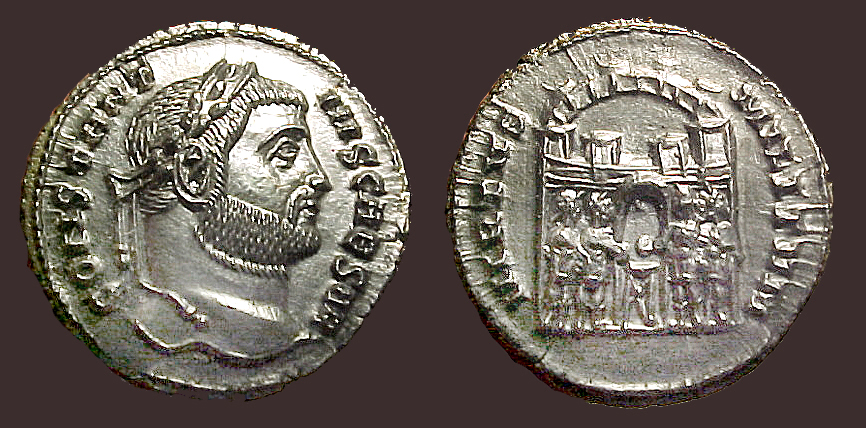

As has been the situation many times in history, those for whom low value coins were indispensable took matters into their own hands. The essential, but low cost, ingredients of daily living, such as bread, still had to be purchased. In the world beyond regal slaughter, life continued much as it had done for decades before. Yet in the former Gallic Empire, few of Aurelian’s new coins entered circulation and those that did had a far higher value than the small change that everyone was used to. These bore XXI on the reverse exergue to signify that one coin was worth one-twentieth of its equivalent weight in silver. Not content with reunifying the empire Aurelian set about reforming the now dire currency and, by 274, antoninianii were being issued at an increased weight with a silver content of 4.5%. Remarkably for this period, he allowed both to abdicate and live on as a civilians in Rome, though there is a suspicion of complicity as Tetricus was likely to have understood that his position was indefensible. By 272 the Palmyrenes had been crushed two years later he defeated the forces of Gallic Emperor Tetricus I and his son at Châlons-sur-Marne in northern France. Watch NowĪurelian, now undisputed master of what remained of the Roman Empire, set about its restoration. Why has history persistently ignored or failed to recognise the role of women? In this Spotlight interview with Dan Snow, Mary Beard explores the many ways throughout history that women have been put down or silenced. With the attentions of Gallienus elsewhere – his father had been captured by the Persians – Postumus added the rest of Gaul to his domain, then Britain and Spain, to form the ‘Gallic Empire’. The hardened veterans of the army had more faith in their general than in a young, inexperienced nobleman and Saloninus was put to death. In 260 he was promoted to co-emperor, at around the same time as the barbarians launched a major advance into Roman territories.įaced with the barbarian threat, Postumus, the governor of Upper and Lower Germany, was quickly proclaimed emperor by his troops. Gallienus had elevated his teenage son Saloninus to the rank of Caesar in 258 and sent him north to Cologne. Under the administration of Claudius II they were degraded to around 2%, and finally to virtually none at all.Ĭoinage that once shone bright of silver, had become merely small change. These included one north of the Alps, most likely at Cologne, the main Roman base on the Rhine frontier.ĭuring the rule of Valerian’s son, Gallienus, antoninianii contained no more than a miserable 4% silver. Watch NowĪt the same time a number of provincial mints were opened across the empire to serve the needs of the army – through which most currency flowed. Professor Michael Scott discusses the immense age of the Silk Road and its importance to Imperial Rome. The Mediterranean and the Near East was just one part of a much larger, interconnected ancient world.


 0 kommentar(er)
0 kommentar(er)
